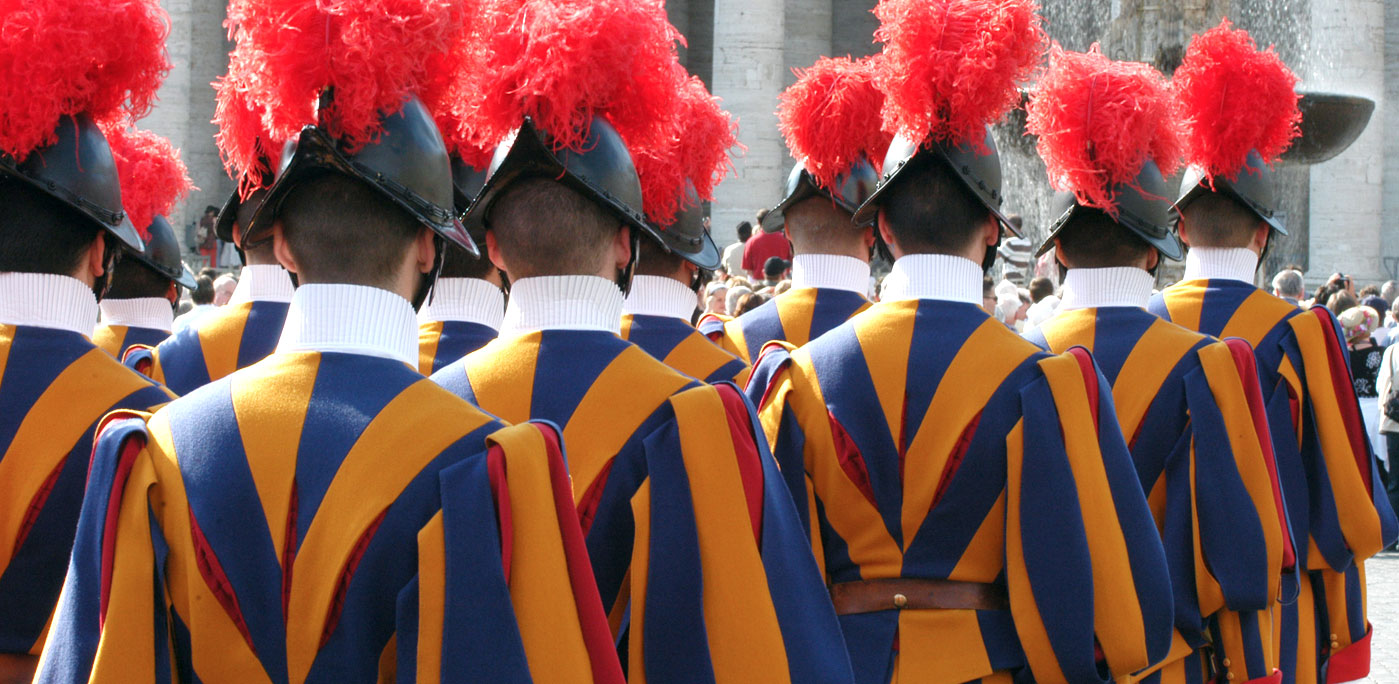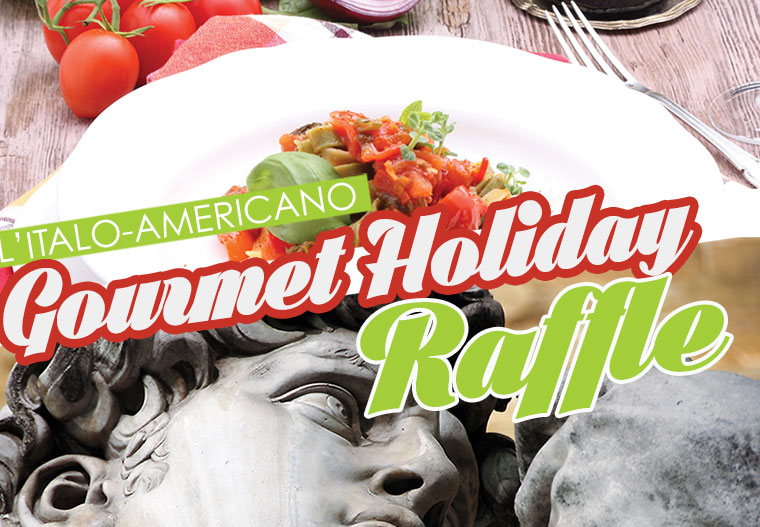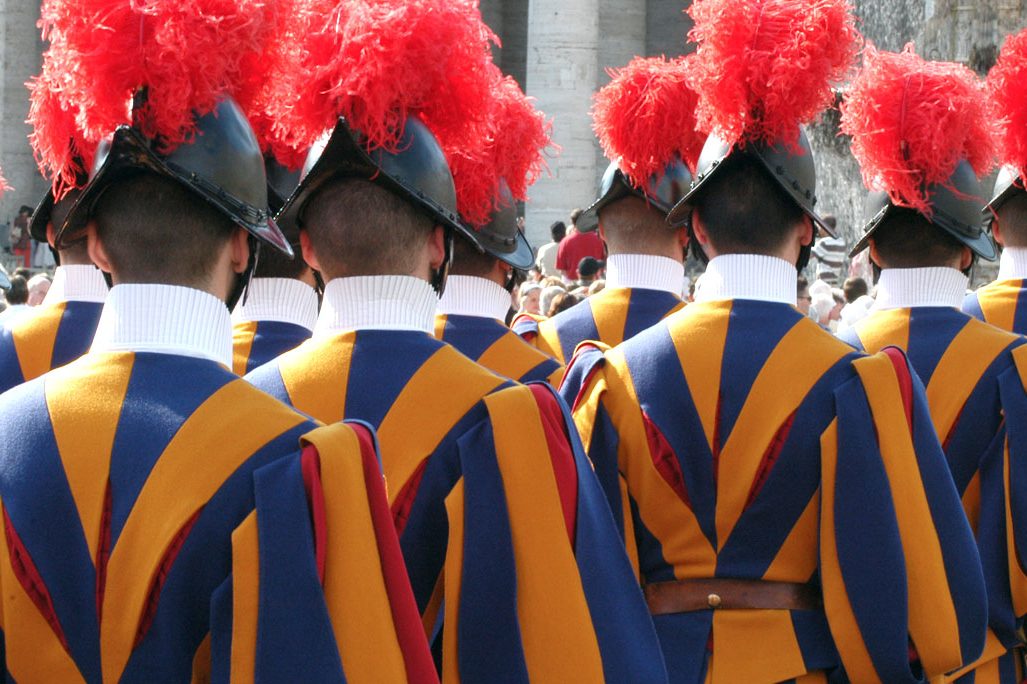After seeing La Guardia Svizzera, or in English, the Swiss Guard, standing at attention at the gates of the Holy City, donned with their halberds, their chest armor, their blue, yellow and red striped uniforms, and helmets with red fur jutting out the top like a Mohawk, I thought they were more or less decoration, just another attraction for tourists—until I heard their story.
The Swiss Guard began as mercenaries, hired swords, a variety of soldier that fought not for defense of their homeland, or for any cause they believed in, but for a paycheck, for glory and spoils.
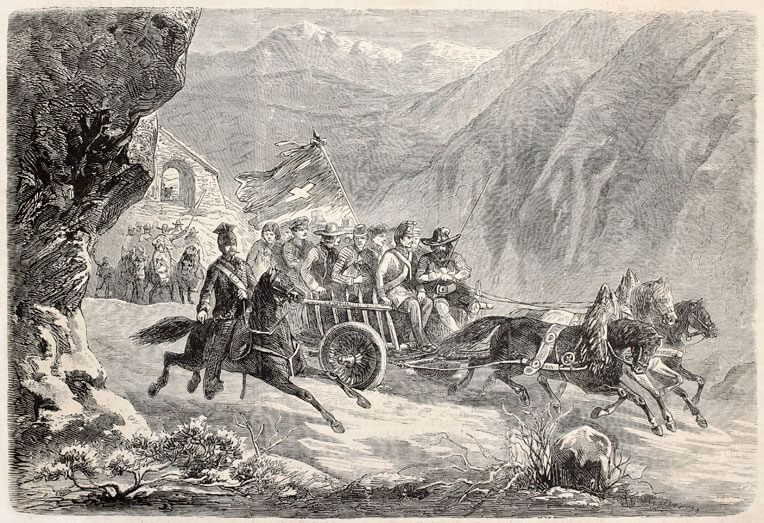
How then, did they become defenders of the church? In the sixteenth century, when wars were waged all across Europe, and faith was very much politicized and persecuted, the pope—Julius II at the time—was in need of an army. Mercenaries were the obvious choice, but enlistments such as these were often temporary. Hired soldiers fought for a period of time, generally in the summer, and in the winter would return to their families with their pockets full. Julius II however, chose a very specific people to become his guard: Helvetians, men from Switzerland who were long known for their valor, their loyalty, and their prowess as warriors. January 22nd, 1506, the date the first company of Helvetic warriors stepped foot into Vatican City, marks the birth of the Pontifical Swiss Guard.
Twenty one years later—on May 6th, 1527, a date that will forever live in infamy—the strength and character of these men was tested. Tested, because Europe was still at war. And war had turned its inescapable eye on the Chair of the Holy See. That morning, under instructions from Emperor Charles V, 20,000 Spanish soldiers marched on Rome, overwhelming and overcoming the city. Their sole purpose: to overthrow Pope Clement VII.
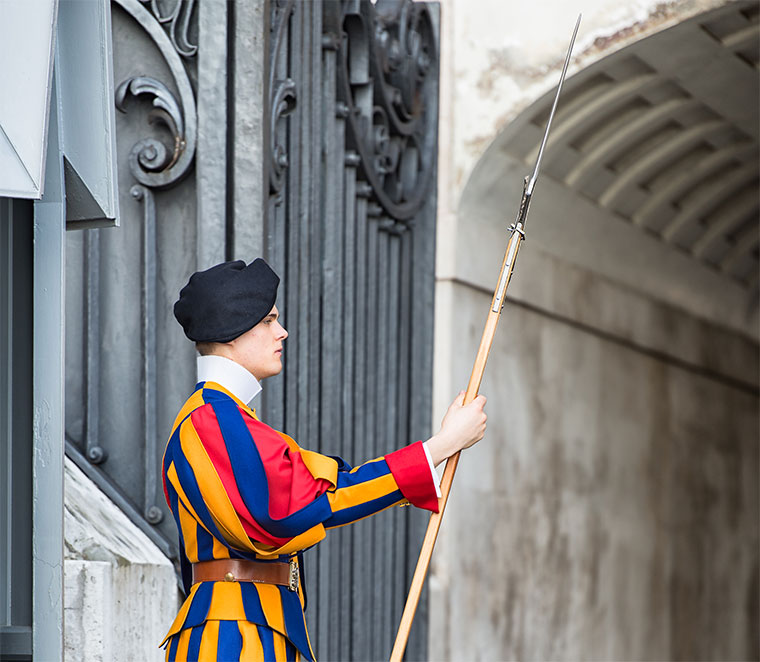
When the soldiers broke through the Vatican gates, there were only 189 Swiss Guard there to defend it—one thousand enemy soldiers to every man in the Swiss Guard. Would you stand unwavering in your duty against those odds, knowing the last thing you would ever see was your comrades slaughtered around you? That was the fate Swiss soldiers chose to accept that day. While 147 Helvetic men defended the Vatican and its people, 42 Swiss Guard accompanied the pope through il Passetto di Borgo, a secret passageway leading to Castel Sant’Angelo. On the steps of Saint Peter’s Basilica, 147 Helvetians made their final stand. On the steps of Saint Peter’s Basilica, 147 Helvetians were massacred. The Helvetians bought the pope’s escape with their blood. The sack of Rome lasted eight days. In that time, the Spaniards unleashed their wrath upon the city, burning, looting, destroying artwork, and slaughtering more than twelve thousand people.
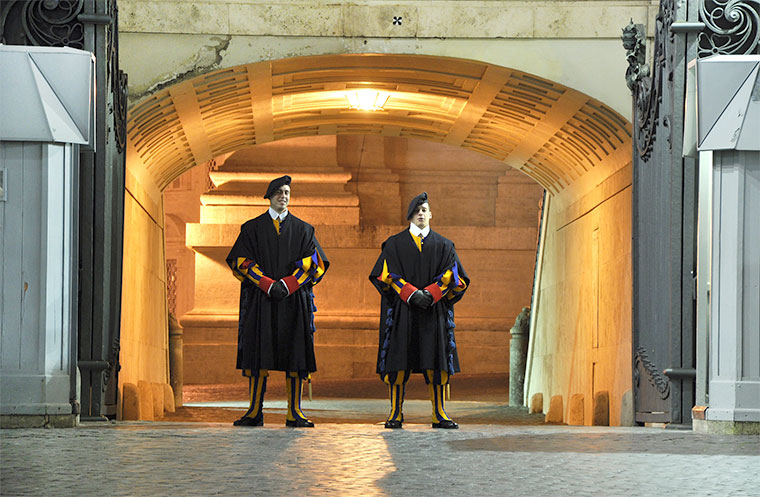
On June 5th, the pope surrendered. In addition to a number of territorial losses the pope ceded as part of his surrender, the pope also suffered the formal loss of his Swiss Guard. Two hundred mercenaries took their place, though the pope offered any of the surviving forty two a place among the new papal guard, twelve of whom accepted.
It was not until three hundred years later, when the papal armies were completely dismissed, that the faithful Guardia Svizzera reclaimed their role as the sole guardians of the pope. In all that time, their loyalty had not been forgotten. And to this day, their sacrifice is honored. Every year, new members of the Swiss Guard are initiated on May 6th to commemorate the brave and loyal sacrifice their fellow countrymen made half a millennia ago.
